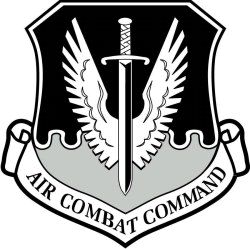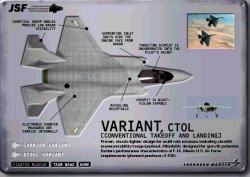| F-22 Flameout: Will Congress Eject? | ||||
|
Two Decades of Dreaming and Hard Work Go to any Internet search engine and type "F-22" in the search field. Most of the hits returned will likely be related to PC sim titles. Naturally, military sim enthusiasts are concerned when a major fighter program is cut, not just as PC software consumers, but as humans with a genuine interest in future technologies that can make the world safer. In my experience simmers are competitive, but principled; rational, but idealistic; peace loving, but aggressive. Generally, they are a good bunch of folks who deserve an explanation of the recent threats to the F-22 Raptor program.
 All F22 images from Air Combat Command I remember the pride I felt upon first reading of this promising new Advanced Tactical Fighter that would replace the F-15. I still marvel at an aircraft that cruises at supersonic speeds without using afterburners, detects virtually any enemy first while itself avoiding detection through stealth, and outmaneuvers any foes via thrust vectoring. I followed its progress with enthusiasm throughout years of both praise and criticism. From early on, there were serious doubts about stealth technology, the aircraft's role, and of course, cost. The success of the F-117 in Panama and the Gulf War eventually squelched doubts about stealth technology. As the Soviet Union collapsed and the U.S. military downsized, opponents of the F-22 characterized the aircraft strictly as a cold war fighter designed to take control of a large scale air war with the Soviets. Today, some critics still maintain that the F-22 is no longer needed without a Soviet Superpower. The charge that the F-22 is a huge financial gamble persists and is the most serious. Yet, the money kept rolling in, as the F-22 continued to demonstrate its potential to one day dominate the air over any battlefield. First Everything Anyone who has simulated flight of the F-22 Air Dominance Fighter in Total Air War understands the F-22's "first look, first shot, first kill" ability. The key words are Air and Dominance. The purpose of the F-22 is to establish absolute control of the skies over any battlefield. Air Force Gen. Richard E. Hawley, Commander, Air Combat Command, affirms the need for U.S. expeditionary forces to establish "a sanctuary free from enemy aerial attack as they disembark at ports and airfields." He further asks "How dominant will we be if the AWACS, JSTARS, Rivet Joint and other information-gathering systems are subject to attack?" Future air battles may not be as one-sided for the U.S. as the Gulf and Kosovo Wars. |

Perhaps the most deceptive argument for discontinuing the F-22 is that if Americans could simply be patient until the year 2010, they would see production of the Joint Strike Fighter. Congressmen hoping to substitute the JSF for the F-22 in order to cut spending must stop looking at this as an either/or proposition. These two aircraft have been designed for two different roles with different manufacturing processes. A good way to understand the differences in the F-22 and the JSF is in comparing the F-15 to the F-16, respectively. When I think of the F-15, the words advanced, superior, and expensive come to mind (to date, an F-15 has never been shot down). When I think of the F-16, I think versatile, low-cost, foreign sales. At this moment in history, we need both products over the battlefield, the F-15 to completely dominate the air, and the F-16 to do a little of everything well. In the same way, future air operations will call for the presence of both a superfighter like the F-22 and a workhorse like the JSF. The Joint Strike Fighter program makes sense both militarily and economically. Besides making improvements in stealth and maneuverability over today's aircraft, the JSF's multi-service design makes it a strike aircraft that will serve just about everyone except the Coast Guard.

The U.S. Air Force, Navy, Marines and U.S. allies all want it. The numerous contracts for the plane as well as the large numbers of aircraft planned for production make it more affordable. This is to say nothing of the lower cost onboard systems which are not as advanced as those of the F-22. There will be "a high degree of commonality between service variants and a single production line," says Boeing, a JSF contractor. Ironically, one of Boeing's JSF customer needs for the Air Force is "complementing the F-22A." Doesn't this sound like the multirole fighter that will replace the F-16? Go to Part II
|
|||
|
Copyright © 1997 - 2000 COMBATSIM.COM, INC. All Rights Reserved. Last Updated October 8th, 1999 |
||||
